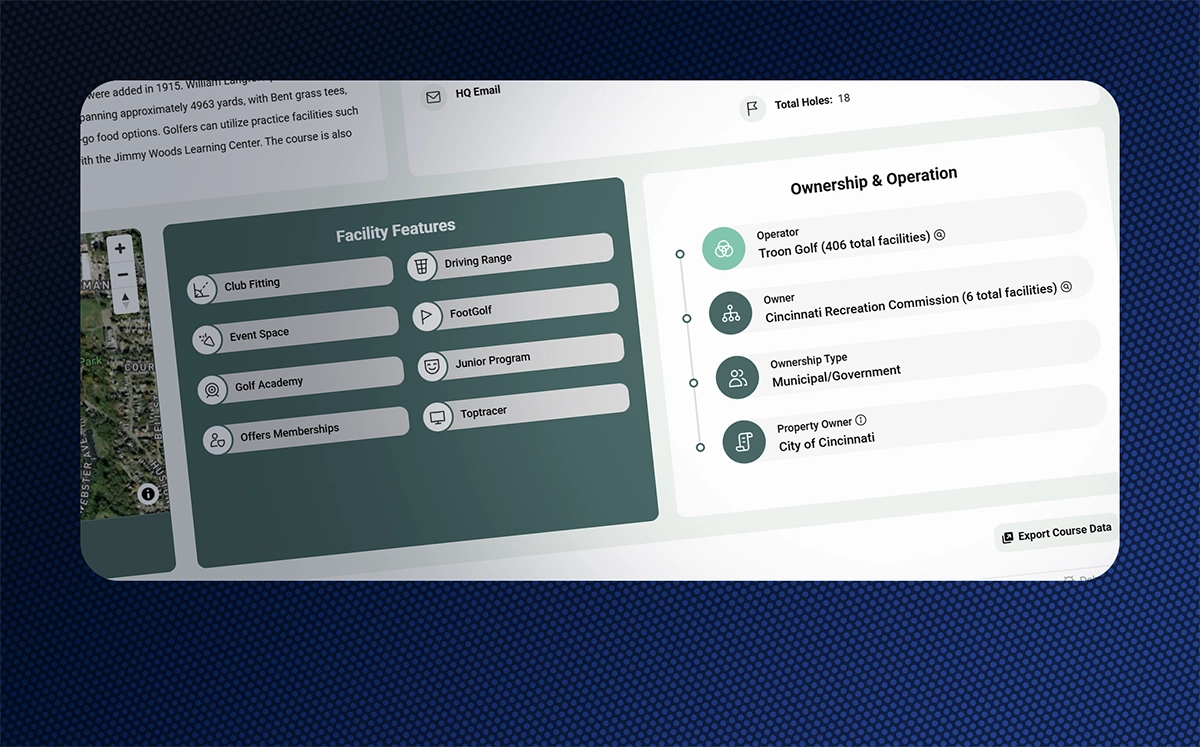If you ask ChatGPT how many municipal golf facilities there are in America, you’ll get a number around 2,600. That figure reflects the general consensus across the golf industry today.
But what exactly counts as a municipal golf facility? Various organizations define “municipal” slightly differently:
- Golf Digest: “A course owned by a city, town, county or state.”
- Golf Magazine: “Generally owned and operated by local governments.”
- National Golf Foundation (NGF): “Owned or operated by government entities.”
That overlap between owned and operated creates confusion. Is a course still municipal if it’s owned by a city but managed by a private company? What about land leased from a county to a private operator? Or courses owned by park districts or public universities? Even the National Park Service owns several golf facilities.
| Level of Government | Number of Facilities |
|---|---|
| Federal Agency | 15 |
| State / State Agency | 132 |
| County / County Agency | 445 |
| Local (City, Park District, Village, Town, Borough) | 2,268 |
| All Levels of Government | 2,860 |
The truth is that municipal involvement in golf takes many different forms, and the industry has not always been precise about how to classify them.
At Downgrain Labs, we wanted to answer this question with data. We connected every active golf facility in our database to its corresponding parcel in public property records to verify who owns the land and whether that owner is a government entity.
The result was the first nationwide, property-level view of golf facility ownership.
We identified 2,860 active golf facilities with clear non-military government ownership, which is hundreds more than what is commonly cited.
| Level of Government | Number of Facilities |
|---|---|
| Federal Agency | 12 |
| State / State Agency | 134 |
| County / County Agency | 448 |
| Local (City, Park District, Village, Town, Borough) | 2,295 |
| All Levels of Government | 2,889 |
Why It Matters
- Public golf is stronger than most people think.
More of America’s golf land is owned by cities, counties, and park districts than the industry has recognized. - A significant portion of golf’s real estate belongs to taxpayers.
That has implications for public policy, funding, and how communities think about access to the game. - Golf’s data infrastructure still has blind spots.
If something as fundamental as ownership can be miscounted, other industry metrics may need a closer look too.
Our conclusion is simple: There are more municipal golf facilities than anyone thinks. How many? Well, that depends on how you define “municipal.”
Learn more about Downgrain’s golf property record owner data and the hundreds of other data points we collection golf facilities.
